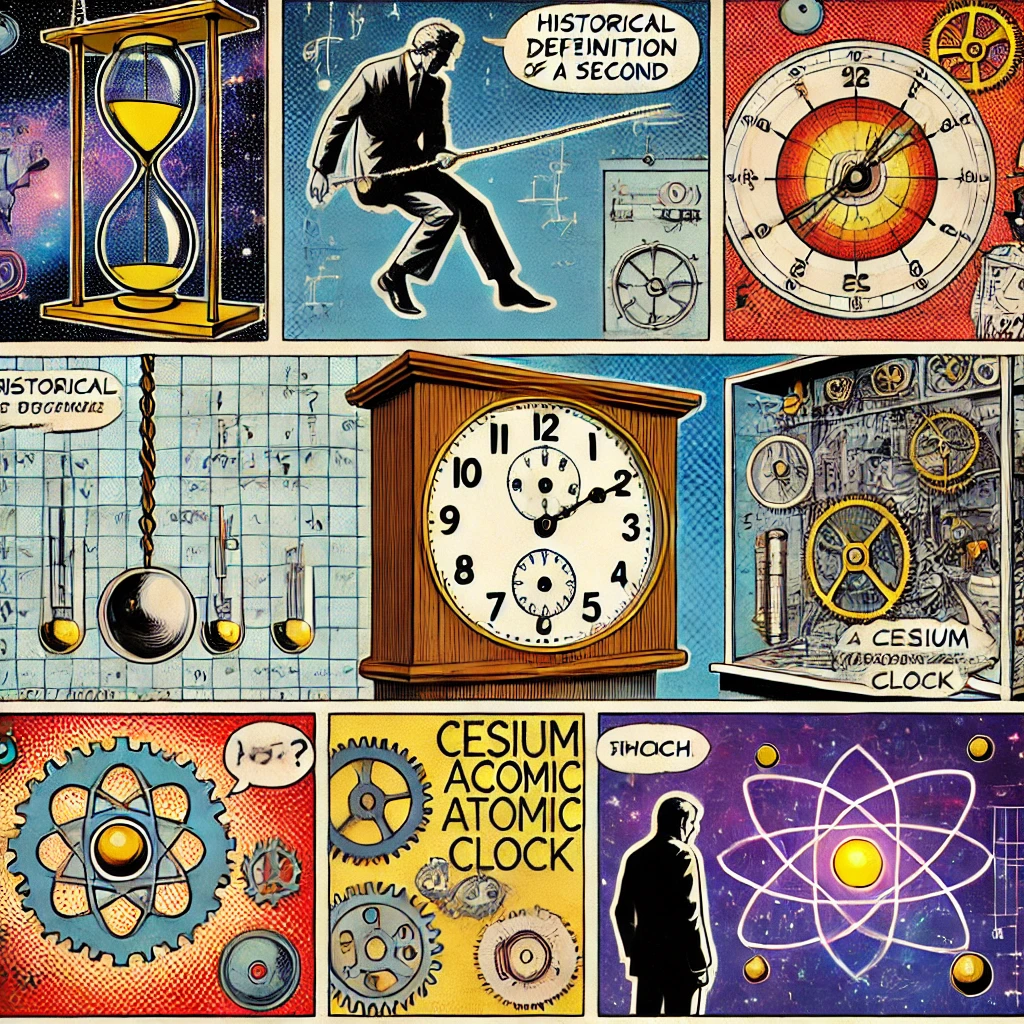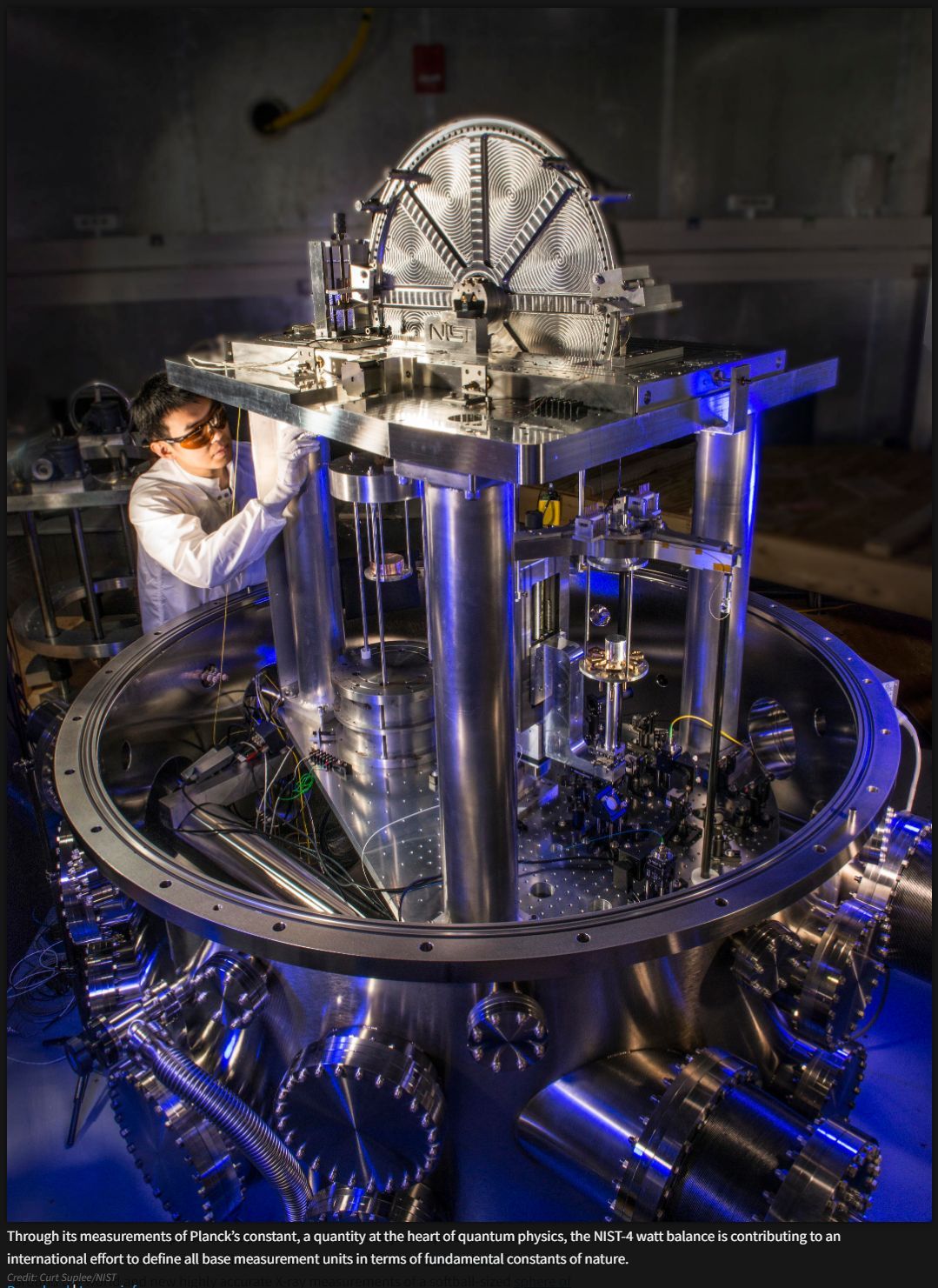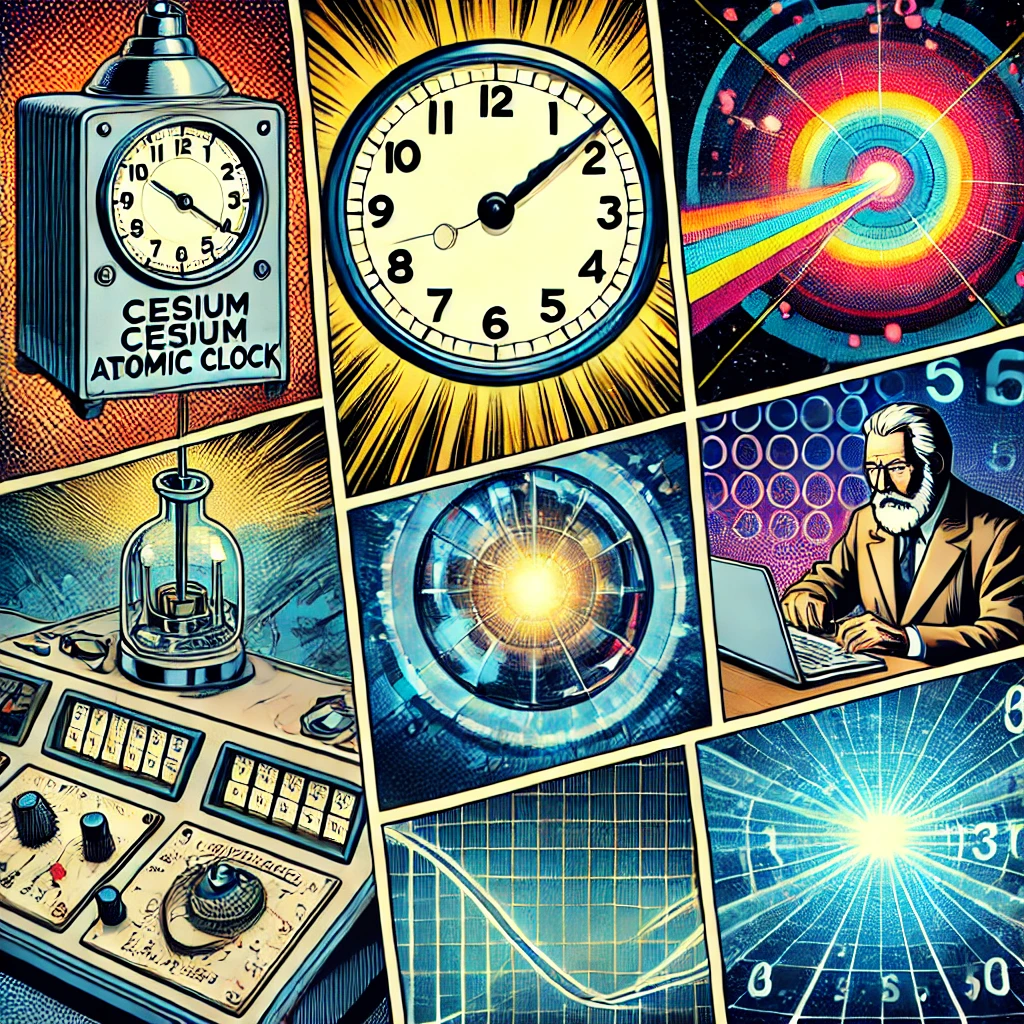Time Bending by Science and Jesuits – What does “one second” actually mean?
Do you understand what “one second” actually means at our present time in our present reality? Ever less likely, as fewer and fewer can and do.
“Frequency” depends innately upon the Second. Historically, one Second was defined by a mass suspended by a rope or chain of known length, swinging a certain distance from its plumb vertical (and before that by divisions of daytime / nighttime periods). Most recently, Jesuit-science-controlled NIST (National Institute for Standards and Technology) has been busy quietly redefining the base units (including the Second) to be dependent upon the number of vibrations of Cesium-137 atoms. The overall effect of this has been to remove verifiability and ascertainability from normal humans and move it into the esoteric realm of deep theoretical science requiring expensive equipment. Claiming need to adjust for variance of one miniscule atto-second deviance which may theoretically occur once in a susquillion millenia, Jesuit-science-controlled NIST has already instituted changing / adjustment of the definition of the Second…literally, this is the beginning of the now-infinitely ‘screw-with-able’ base unit definition of time. One Second is no longer what everyone can test and see for themselves but instead has been transformed into some detached theoretical blather involving ever fewer persons (and ever rarer and costlier technologies and understanding). In this way, the definitions of truth are being captured and controlled. Jesuits literally exist to “counter” the Protestant Reformation and all heretical aspects and persons, of which America is largely composed. This likely does not bode well.
https://soundquality.org/2021/03/the-bible-numbers-712-89-and-the-solfege-scale/
There has recently been a shift in the way fundamental physical units, such as the second, are defined; consider the implications of this change for accuracy, reality, accessibility and transparency.
Historical Context of the Second:
- Pendulum-based definition: The second was historically derived from observable, mechanical systems like a pendulum, where the time for a pendulum to swing back and forth was related to its length and gravitational acceleration. This method was intuitive, verifiable with simple tools, and accessible to anyone with basic equipment.
- Universal practicality: This definition tied time measurement to phenomena that could be replicated by individuals in diverse settings, providing a shared understanding of time.
Modern Redefinition by Cesium-137:
- Cesium atomic clock: Since 1967, the second has been defined as the duration of 9,192,631,770 vibrations (or cycles) of radiation emitted by a Cesium-137 atom transitioning between two specific energy states. This atomic timekeeping standard is extraordinarily precise and underpins global systems like GPS.
- Technical exclusivity: Unlike the pendulum method, this modern definition relies on complex, costly equipment that is inaccessible to most individuals. The necessary understanding of quantum mechanics and high-tech apparatus limits verification to specialized institutions. In this way, literally, They have ‘re-magicked’ the definition of the Second.
Critique of Accessibility:
- Centralized authority: The move to atomic definitions places the control of time measurement in the hands of a small number of institutions, such as NIST, which is mentioned as Jesuit-controlled in the note. Whether or not this control has ulterior motives, the practical effect is a loss of direct agency for the average person.
- Esoteric knowledge: As time measurement is now rooted in quantum physics, it becomes an abstraction that the general public cannot independently verify, fostering dependence on elite technical expertise.
Broader Implications:
- Loss of Tangibility: Tying timekeeping to natural, mechanical phenomena (like pendulums) connected people with the physical world. Modern definitions, while scientifically robust, create a layer of abstraction that distances people from understanding the foundational elements of time.
- Trust in Institutions: The shift requires the public to trust that institutions like NIST accurately maintain and disseminate standards, raising questions about transparency and accountability.
- Potential for Manipulation: If the new definitions of time and related units depend on deep theoretical constructs, they may be perceived as vulnerable to manipulation by those in control. This could feed into theories about institutional agendas.
Alternative Perspectives:
- Precision vs. Accessibility: Modern redefinitions aim to ensure universal and precise standards, crucial for technology and global synchronization. The tradeoff, however, is reduced accessibility.
- Decentralization potential: Emerging technologies, such as open-source atomic clock kits, may eventually democratize access to atomic timekeeping, mitigating concerns about centralized control.
Conclusion:
The redefinition of the second reflects humanity’s pursuit of precision in measurement but simultaneously raises important questions about accessibility, transparency, and trust in centralized institutions. Balancing precision with practical verifiability is an ongoing challenge, with philosophical implications for how societies organize and democratize knowledge.

Historical Jesuit Influence on Education and Science
- Jesuit Contributions to Education:
- The Jesuit order, founded in 1540, has a long history of establishing educational institutions globally.
- Jesuit-run universities, such as Georgetown University and Boston College, are prominent in higher education.
- Scientific Contributions:
- Jesuit scientists have historically contributed to fields such as astronomy, mathematics, and natural philosophy. Examples include Matteo Ricci and Christopher Clavius.
- Jesuit involvement in science has remainded significant since the Renaissance and early modern periods.
Modern Context: Higher Education and Science
- Jesuit Educational Institutions:
- Jesuits run many educational institutions but do not control all of higher education.
- These institutions operate alongside secular and non-Jesuit schools, contributing to a diverse academic landscape.
- Science and Governance:
- Scientific research and education are influenced by a variety of factors, including government, private funding, and international collaboration.
NIST’s Role in Science
- Mission and Structure:
- The National Institute of Standards and Technology (NIST) is a U.S. federal agency under the Department of Commerce.
- NIST develops standards, measurement technologies, and supports innovation, with transparency and public oversight.
- Historical and Current Operations:
- NIST’s leadership and operations are determined by federal appointment processes and public accountability.
Summary of Evidence
- Jesuits have historically influenced education and some scientific fields.
- NIST operates as a secular, federally governed agency.

The National Institute of Standards and Technology (NIST) is actively engaged in efforts to redefine the second, the fundamental unit of time in the International System of Units (SI). Since 1967, the second has been defined based on the microwave frequency associated with the hyperfine transition of the cesium-133 atom. Advancements in timekeeping technology, particularly the development of optical atomic clocks, have prompted the scientific community to consider a more precise definition.
Advancements in Timekeeping:
- Optical Atomic Clocks: These clocks utilize optical frequencies, which are significantly higher than microwave frequencies, allowing for greater precision. Elements such as ytterbium and strontium are commonly used in these systems. Recent developments have demonstrated that optical clocks can achieve uncertainties better than 1 part in 10^18, surpassing the performance of traditional cesium-based clocks.
Roadmap for Redefinition:
- Consultative Committee for Time and Frequency (CCTF): In 2020, the CCTF established a task force to update the roadmap towards redefining the SI second. This roadmap outlines the criteria and steps necessary for the redefinition, including the validation of optical clocks’ performance and their integration into international timekeeping.
- International Collaboration: The redefinition process involves global cooperation among national metrology institutes, including NIST, to ensure consistency and accuracy across different timekeeping systems. The goal is to adopt a new definition by the end of the decade, reflecting the enhanced precision of optical clocks.
Implications of Redefinition:
- Enhanced Precision: A more precise definition of the second will benefit various scientific and technological fields, including telecommunications, navigation, and fundamental physics research.
- Technological Integration: Implementing the new definition will require updates to existing timekeeping infrastructure and the development of new technologies capable of realizing and disseminating the redefined second.
NIST continues to play a pivotal role in this international effort, contributing to the development and validation of next-generation atomic clocks and ensuring a seamless transition to the redefined second.
